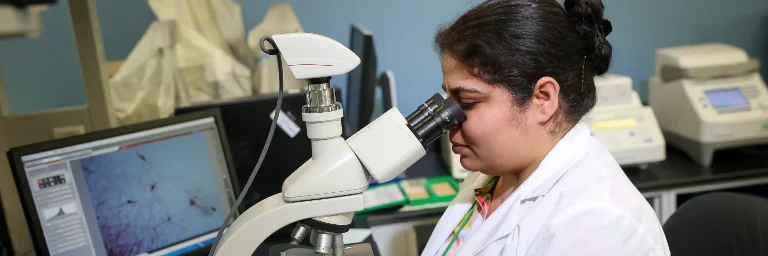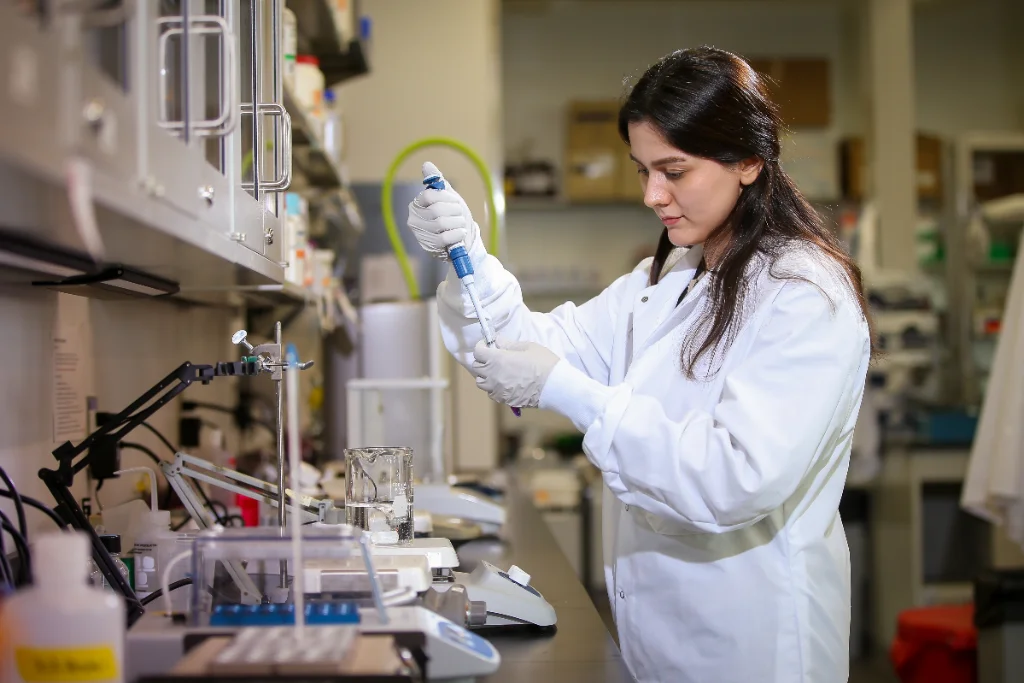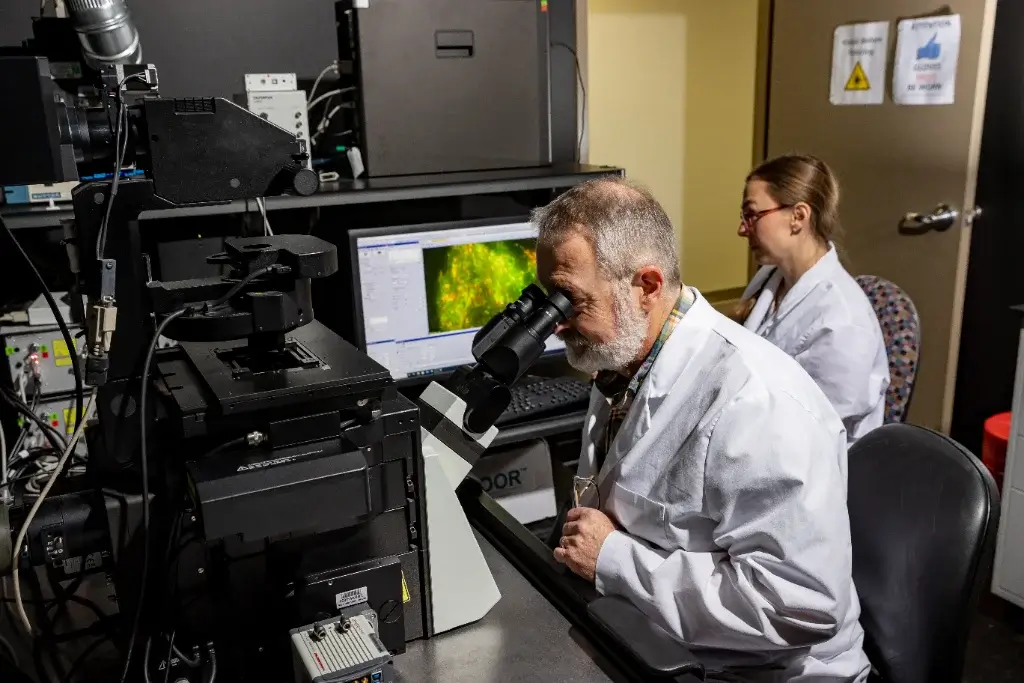
Bioengineering vs. Biomedical Engineering: What’s the Difference?
The significance of medical devices engineered by bioengineers and biomedical engineers is undeniable.
Request Information
From life-saving pacemakers and prosthetic limbs to cutting-edge MRI machines and diagnostic equipment, these innovations have become indispensable. However, amidst the marvel of these creations, it's easy to blur the lines between bioengineering and biomedical engineering. After all, their names and even the principles they use seem to intertwine seamlessly. But, exploring deeper reveals their distinct identities and roles.
So, let's learn more about the two as we compare bioengineering vs. biomedical engineering, examine their differences, and uncover their contributions to the world.
What is Bioengineering?
Bioengineering represents a fusion of biological and engineering principles, aiming to tackle a broad spectrum of challenges across biology, healthcare, and numerous other domains. Its main goal is to apply engineering techniques to biological systems to inform engineering design.
This interdisciplinary field encompasses diverse areas such as tissue engineering, genetic engineering, biomechanics, medical imaging, and pharmaceuticals. Bioengineering practitioners utilize their expertise to design and create medical devices, diagnostic tools, therapeutic interventions, and biotechnological processes aimed at improving human health and addressing complex healthcare challenges. By leveraging insights from both engineering and biology, bioengineering seeks to advance medical diagnostics, treatments, and healthcare technologies to enhance the quality of life for individuals worldwide.
What is Biomedical Engineering?
Biomedical engineering is another specialized field that focuses on engineering principles and techniques to solve problems in biology and medicine. It aims to develop innovative technologies and devices to address healthcare, diagnostics, and therapy challenges.
Biomedical engineers design and create medical devices such as prosthetics, implants, imaging systems, and diagnostic equipment to improve patient care and outcomes. They also develop new materials and techniques for tissue engineering and regenerative medicine and advance medical imaging modalities for improved diagnosis and treatment planning.
Difference Between Bioengineering and Biomedical Engineering
Both bioengineering and biomedical engineering share the common goal of applying engineering principles to address challenges in biology and medicine. However, they differ in their scope and methodologies. While bioengineering involves applying engineering techniques to biological systems and emphasizes integrating biological principles into engineering applications, biomedical engineering is more focused on developing innovative technologies and devices.
Beyond these distinctions, the two career paths also differ significantly in terms of education, skill set, duties, and more.
Education
The educational journey in bioengineering typically begins with a bachelor's degree in bioengineering or a related engineering field. Such undergraduate programs offer curricula covering various topics, including biology, chemistry, physics, mathematics, and engineering principles. Students explore biomechanics, biomaterials, medical imaging, and physiological systems, gaining a solid foundation in biological sciences and engineering fundamentals.
Upon completing their undergraduate studies, many students pursue advanced degrees such as a master's or Ph.D. in the same fields. These graduate programs offer opportunities for specialized research and coursework in tissue engineering, genetic engineering, or biomedical device design, allowing students to deepen their expertise and contribute to advancements in the field.
On the other hand, biomedical engineering education is tailored to provide students with a unique blend of medical sciences and engineering principles. Students interested in this field typically pursue a bachelor's degree in Biomedical Engineering, where they undergo rigorous training in biology, physiology, anatomy, and engineering fundamentals. Additionally, students may pursue minors in Biomedical Engineering to complement their primary field.
For those seeking advanced education, master's in Biomedical Engineering and Ph.D. programs offer specialized coursework and research opportunities in areas such as medical device design, biomaterials, tissue engineering, and biomedical imaging. Some universities also offer accelerated programs, allowing students to earn both their bachelor's and master's degrees in bioengineering within a condensed time frame.

Skill Set Requirements
Bioengineers require a specific skill set that encompasses both technical proficiency and non-technical abilities to fulfill their duties. Some of these skills include:
- Proficiency in biotechnology and genetic engineering
- Understanding of systems biology
- Mastery of engineering principles
- Excellent communication skills
- Strong problem-solving abilities
- Adaptability and flexibility
- Ethical and professional conduct
Similarly, biomedical engineers share some skills in common with bioengineers, particularly soft skills such as problem-solving, communications, and adaptability, among many others, but also require additional abilities specific to their field. These include:
- Expertise in medical device design
- Proficiency in biomedical software development
- Knowledge of regulatory requirements
- Familiarity with clinical environments
- Strong project management skills
- Continuous learning and professional development
Job Responsibilities
Bioengineers have a diverse range of responsibilities that span various sectors. Their day-to-day duties may include:
- Developing agricultural technologies
- Designing and creating synthetic biological systems
- Creating medical devices and diagnostic tools
- Collaborating with biologists, chemists, and other professionals to develop biotechnological processes for pharmaceutical production and environmental conservation
- Applying engineering principles to design and optimize processes for biofuel production, waste treatment, and renewable energy sources
Biomedical engineers' work also encompasses many responsibilities to advance patient care and medical innovation. Some of their duties include:
- Designing and developing various medical devices
- Researching to innovate new diagnostic tools and medical imaging technologies for early disease detection and treatment monitoring
- Applying tissue engineering principles to develop regenerative therapies and organ transplantation techniques
- Participating in regulatory compliance activities to ensure that medical devices meet quality standards and regulatory requirements
- Developing computational models and simulations to analyze physiological processes and optimize treatment strategies
Work Environment
Bioengineers and biomedical engineers generally work in different environments and have distinct focus areas. Bioengineers work in research laboratories in academic institutions, government agencies, and private research organizations. They contribute to biotechnology companies that focus on pharmaceuticals, medical devices, and biotechnological processes. Some bioengineers may also pursue academic careers, teaching and researching at universities and institutions that offer dynamic opportunities in basic research and applied technology development.
On the other hand, biomedical engineers primarily work in healthcare and medical technology settings. They may also contribute to medical device companies, participating in designing, testing, and producing prosthetics, implants, and diagnostic equipment. Additionally, they conduct research and innovation in health science labs to advance healthcare technologies, reflecting their dedication to improving medical care and patient outcomes.
Job Outlook and Salary
According to the Bureau of Labor Statistics (BLS), the job outlook for bioengineers and biomedical engineers is promising. The projected growth rate for these occupations is 5% from 2024 to 2034, faster than the average for all occupations. This growth is expected to result in approximately 1,200 job openings each year over the decade.
Meanwhile, the median annual wage for bioengineers and biomedical engineers is $106,950. The lowest 10 percent earn less than $71,860, while the highest 10 percent earn over $65,060. These salary ranges reflect the field's varying levels of experience, education, and industry specialization.

Bioengineering vs. Biomedical Engineering: Which One is Right for You?
When deciding between bioengineering and biomedical engineering, reflecting on your interests and passions is essential. If you are interested in applying engineering principles to solve biological and medical challenges, bioengineering may be the right choice for you. On the other hand, biomedical engineering might be a better fit if you are more drawn to designing medical devices, developing new diagnostic tools, or working directly in healthcare settings.
Another factor to consider is the work environment you envision for your career. Bioengineers often work in research laboratories, academic institutions, and biotechnology companies, focusing on developing new technologies and conducting experiments. Bioengineering could be a good match if you enjoy hands-on experimentation and innovation. Biomedical engineers, on the other hand, commonly work in hospitals, medical device companies, and health science research labs, collaborating with healthcare professionals to improve patient care. Biomedical engineering may be the better choice if you prefer a more clinical or industry-focused setting.
Additionally, consider your academic strengths and interests when choosing between bioengineering and biomedical engineering programs. Bioengineering programs typically offer a broader curriculum that integrates biological and engineering principles, while biomedical engineering programs may have a more specialized focus on medical devices, diagnostics, or tissue engineering. Evaluate each program's course offerings, research opportunities, and faculty expertise to determine which aligns best with your academic goals and interests.
Ultimately, the choice between bioengineering and biomedical engineering depends on your interests, career goals, and academic strengths. So, take the time to explore both fields, talk to professionals in each field, and consider your personal preferences before making a decision.
Conclusion
Bioengineering and biomedical engineering serve crucial purposes, contributing to advancements in healthcare and improving the quality of life for individuals worldwide. Whichever field you choose to pursue, your contributions will be invaluable in shaping the future of medicine and addressing pressing health challenges.
At UND, we're committed to supporting you every step of the way, providing the resources and guidance you need to succeed. Join our community and become part of a collective effort dedicated to building a brighter future through life-saving medical innovations.
FAQs
Yes, individuals from non-engineering backgrounds can transition into bioengineering or biomedical engineering careers by pursuing relevant graduate programs or acquiring additional training and skills through specialized courses and certifications.
Certainly, bioengineers and biomedical engineers frequently collaborate in industry settings to develop innovative solutions for healthcare challenges, such as medical devices, diagnostic tools, and biotechnological processes.
Some key challenges faced by bioengineers and biomedical engineers include navigating regulatory requirements, ensuring the safety and efficacy of medical technologies, staying abreast of rapidly evolving advancements in technology and healthcare, and addressing ethical considerations in research and development.